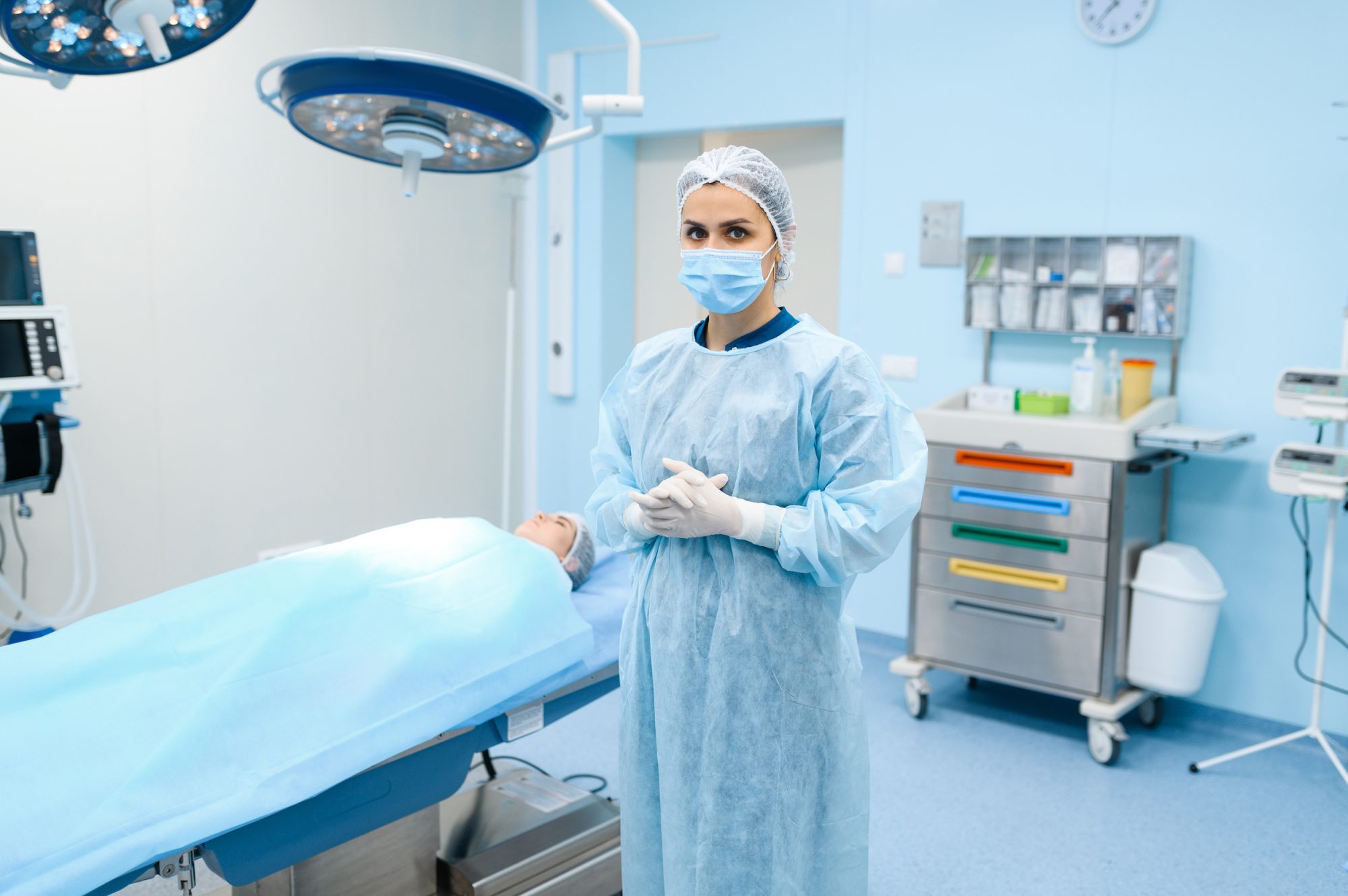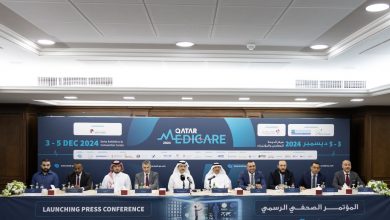HMC Open First Radiopharmaceutical Lab in Qatar
حمد الطبية تستخدم لأول مرة العلاج النووي للأورام لعلاج السرطان
QNA
Doha: Hamad Medical Corporation (HMC) announced the commencement of Nuclear Treatment of tumors following the opening of the first Radiopharmaceutical Laboratory in the State of Qatar.
The new laboratory, located at HMC’s National Center for Cancer Care and Research (NCCCR), will provide cancer patients with diagnostic and therapeutic care locally, saving these patients the need to travel abroad for this type of care.
The Senior Consultant Radiologist and Chief Radiologist at Hamad Medical Corporation Dr. Maryam Al Kuwari, stated that the new Radiopharmaceutical Laboratory undertakes the preparation of radiation drugs used for diagnosing and for nuclear treatment of tumors. These drugs are safely prepared in conformance with international standards where doses are meticulously calculated to suit the types of tumors and the needs of patients. Drug doses are subject to quality control checks prior to administrating them to patients, Dr. Maryam Al Kuwari explained.
“The nuclear treatment of tumors is based on radioactive drugs which target and destroy cancerous cells without affecting normal or healthy surrounding cells. This technique is a highly effective option to treat malignant thyroid, hepatic, prostate, and endocrine tumors. These therapeutic drugs are isotopes combined with biological molecules that target cancer cells within the human body. Following the diagnostic process, therapeutic drugs are prepared by a highly trained team. Similar laboratories will be established across HMC facilities in the future to meet patient needs in the country,” Dr. Maryam Al Kuwari explained.
Nuclear medicine therapy is an approach to treating cancer that might be used with or after other treatment options, such as chemotherapy and surgery. It won’t usually lead to a cure unless combined with other therapies. But for many people it will control symptoms and shrink and stabilize the tumors, sometimes for years. Nuclear medicine therapy is sometimes the best option for people who no longer respond to other treatments.
HMC’s Nuclear Medicine unit, which is part of the Clinical Imaging Department, continues to introduce state of the art technologies with the aim of expanding and bringing healthcare services provided to patients in Qatar on par with those offered worldwide. An example of the latest technologies utilized at the unit is the introduction of the 2nd Positron Emission Tomography – Computed Tomography, better known as (PET-CT).
Clinical research has shown that PET-CT diagnostic approach is far more effective than conventional scanning as it helps healthcare professionals differentiate malignant tumors from benign ones, thus enabling them to determine tumor stages, how far cancer cells are spread, and how these cells respond to treatment whereby these professionals would be able to develop the appropriate treatment plan. Radioactive glucose is considered is one of the most common drugs used in the diagnosis of tumors.
The 2nd PET-CT has helped reduce patients wait time and allowed performing tests in a timely manner. More than 25 tests can now be performed daily at the unit. The introduction of such advanced healthcare services is indicative of HMCs commitment to providing world-class care, bearing in mind that nuclear medicine is an integral part of clinical imaging and plays a vital role in the diagnosis and early detection of disease.
The Consultant of Diagnostic Radiation for Breast Cancer at HMC Dr. Haya Al Meraikhi, stated that the Nuclear Medicine unit has introduced other state of the art diagnostic modalities such as Positron Emission Mammography (PEM). This first of a kind tool in Qatar is licensed by the US Food & Drug Administration (FDA), and helps diagnose early-stage breast cancer as well as the remission of the condition after surgery and radiotherapy. Compared to conventional mammogram, PEM is more effective in screening young women for breast cancer as the diagnosis can be more difficult due to breast tissue density. It also provides more conclusive test results revealing tumors even less than 1 cm in size.
PEM modality is ideal for patients who cannot undergo Magnetic Resonance Imaging (MRI) due to reasons such as Claustrophobia (fear of confined spaces), having pacemakers implanted, or allergic to MRI contrast dye. The use of PEM depends on the condition of the patient upon consultation with the attending oncologist. The PEM modality can produce a 3D high-resolution image that is 80% clearer than that produced by conventional mammogram. Unlike MRI, PEM pinpoints the exact location of cancer cells thus ridding patients the inconvenience of unnecessary biopsies otherwise needed for the screening process, Dr. Haya Al Meraikhi added.
قنا
الدوحة: أعلنت مؤسسة حمد الطبية، عن بدء العلاج النووي للأورام مع افتتاح مختبر الصيدلة الإشعاعية الأول بالمركز الوطني لعلاج وأبحاث السرطان، وذلك لتشخيص الأورام وتقديم العلاج النووي لمرضى الأورام، مما يوفر على العديد من مرضى الأورام عناء السفر للخارج لتلقي هذا النوع من العلاج.
وقالت الدكتورة مريم الكواري، كبير أطباء أشعة الطب النووي بمؤسسة حمد الطبية، في تصريح صحفي اليوم، إن مختبر الصيدلة الإشعاعية يتم فيه تحضير العقاقير التشخيصية للأورام، والعقاقير العلاجية المشعة لعلاج الأورام بالمادة النووية، حيث يتم تحضيرها في بيئة آمنة وفق المعايير الدولية، ويراعى حساب جرعات المرضى وفق عدادات خاصة حسب حالة المريض ونوع الورم، كما يتم إجراء مراقبة الجودة قبل حقنها للمريض.
وأضافت أن العلاج النووي يعتمد على أدوية ناشطة إشعاعيا، تستهدف الخلايا السرطانية مباشرة، وتعمل على تدميرها دون أن تتسبب في حدوث ضرر بالأنسجة السليمة المحيطة بالورم، حيث أثبتت الدراسات فعاليتها في أورام الغدة الدرقية وأورام الكبد الخبيثة وسرطان البروستاتا وكذلك أورام الغدد العصبية الصماوية.
وأشارت الدكتورة الكواري إلى أن هذه العقاقير العلاجية تعتبر نظائر مرتبطة بجزيئات بيولوجية تعمل على استهداف خلايا معينة داخل جسم الإنسان وهي الخلايا السرطانية، ويتم التشخيص وإعداد تلك العقاقير العلاجية من خلال طاقم فني مكون من 7 أشخاص تم تدريبهم تحت إشراف صيدلي مؤهل، لافتة إلى أنه من المستهدف زيادة عدد المختبرات مستقبلا حتى تكون متاحة في معظم مستشفيات مؤسسة حمد الطبية.
جدير بالذكر أن علاج السرطان بالطب النووي يمكن استخدامه مع الخيارات العلاجية الأخرى أو بعدها، كالعلاج الكيميائي والإجراءات الجراحية، لاسيما أن هذا العلاج يستطيع السيطرة على الأعراض لدى العديد من المرضى، فضلا عن تقليص الأورام، وإيقاف نموها لسنوات في بعض الأحيان، بينما عد العلاج بالطب النووي أحيانا خيارا مثاليا للمرضى الذين توقفت حالاتهم عن الاستجابة للعلاجات الأخرى.
ويواصل قسم الطب النووي بمؤسسة حمد الطبية، الذي يعد جزءا من التصوير السريري، استحداث العديد من الخدمات والأجهزة الحديثة، حيث تم مؤخرا تدشين الجهاز المقطعي البوزيتروني الثاني (PET-CT).
وأثبتت الأبحاث السريرية أن التصوير المقطعي البوزيتروني يتفوق على التصوير التقليدي، حيث يلعب دورا كبيرا في تشخيص الأورام والتمييز بين الأورام الحميدة والخبيثة وتحديد مراحل الورم، فضلا عن تتبع مدى انتشار الورم واستجابته للعلاج وبدقة عالية مما يساعد في وضع خطة العلاج المناسبة للمريض، ويعد الجلوكوز المشع هو أكثر الأدوية شيوعا المستخدمة في تشخيص الأورام.
وأوضحت الدكتورة مريم الكواري، أن الجهاز البوزيتروني الثاني ساهم في تقليل وقت انتظار المرضى والسماح بإجراء الفحص في الوقت المناسب، حيث يمكن زيادة عدد الحالات التي تخضع للفحص إلى الضعف لتصل إلى 25 حالة يوميا، قائلة إن إطلاق مثل هذه الخدمات الجديدة يعكس تركيز مؤسسة حمد الطبية على الالتزام بمواصلة التقدم في جودة الخدمات ومواكبة أفضل المعايير الدولية، حيث يمثل الطب النووي جزءا لا يتجزأ من التصوير الطبي ويؤدي دورا رئيسيا في التشخيص والكشف المبكر عن الأمراض.
ومن ناحية أخرى، يشهد قسم الطب النووي تطويرا آخر على مستوى الخدمات المقدمة للمرضى تتمثل في جهاز المسح البوزيتروني للثدي ( PEM) والذي يعد الأول من نوعه في دولة قطر.
وبخصوص ذلك، قالت الدكتورة هيا المريخي، استشاري الأشعة التشخيصية للثدي بمؤسسة حمد الطبية، إن الجهاز مرخص من هيئة الغذاء والدواء الأمريكية، ويساعد على تحسين فرص الكشف عن الإصابة بسرطان الثدي في مراحله المبكرة، والكشف عن تكرار الإصابة بسرطان الثدي بعد الجراحة والعلاج الإشعاعي، فضلا عن تحسين فحوصات سرطان الثدي لدى الإناث في الأعمار الصغيرة حيث تكون أنسجة الثدي كثيفة وبالتالي فإن استخدام التصوير الإشعاعي التقليدي (الماموجرام) لا يوفر نتائج حاسمة، أو عندما يكون حجم الورم أقل من واحد سنتيمتر.
وأوضحت أن جهاز المسح البوزيتروني للثدي يمكن استخدامه أيضا مع بعض الحالات التي يصعب خضوعها للرنين المغناطيسي مثل بعض الحالات التي تعاني من الرهبة من الأماكن المغلقة وبعض المرضى الذين لديهم بطاريات للقلب، وكذلك الذين يعانون من حساسية ضد صبغة الرنين المغناطيسي، مؤكدة تمتع هذا الجهاز بدقة عالية وجودة الصورة (ثلاثية الابعاد) بنسبة تصل إلى 80 بالمئة مقارنة بالأشعة التقليدية (الماموجرام)، كما يعمل على تسهيل التعرف على أماكن تواجد الخلايا السرطانية بالجسم بشكل محدد مما يجنب المرضى التعرض للخزعات غير الضرورية، وهو ما لا يوفره الرنين المغناطيسي.




